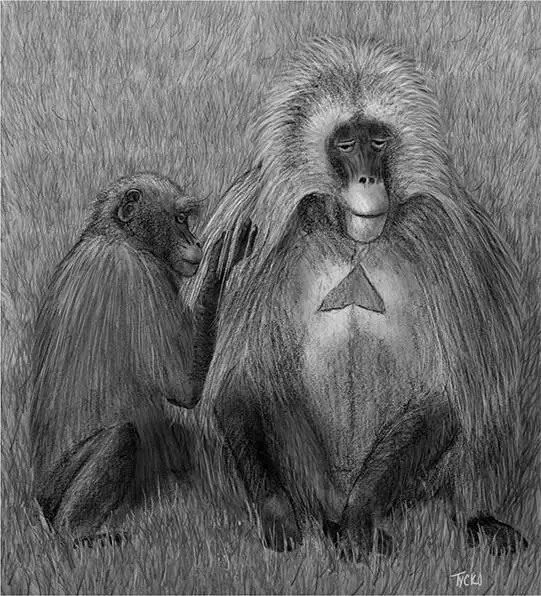With its complex social milieu, clear measures of team and individual performance, and plenty of butt slapping, high fives, and chest bumps, there is no better tactile/social living laboratory than the National Basketball Association (NBA). This was the insight of a research group at UC Berkeley composed of Michael Kraus, Cassy Huang, and Dacher Keltner. They reasoned that since interpersonal touch can promote trust and cooperation, two important factors for a successful basketball team, increased touch between teammates early in the season should predict more cooperative behavior and better performance as the season unfolds.
To measure this, Kraus and coworkers first watched videotapes of games featuring all thirty NBA teams (294 players were involved 9) in the early part (the first two months) of the 2008–9 season. They scored the occurrence, type, and duration of celebratory touching (fist bumps, leaping shoulder bumps, high tens, and so on) that followed a player’s making a successful shot. For these same games the researchers also produced ratings using an index of cooperative behaviors, including talking to teammates, passing the ball, and setting screens—that is, behaviors that showed a reliance on teammates, sometimes at the expense of one’s own individual performance. To measure individual and team performance over the course of the season, they turned to statistics maintained by the NBA and distributed freely on its Web site. 10When the data were crunched and the appropriate statistical tests run, there was a clear result: Celebratory touch during games early in the season was associated with higher performance throughout the season for both individual players and teams (figure 1.2).
But might this association come about trivially? For example, what if the best players and teams simply score more often and therefore have more cause to celebrate with touch? That would change the interpretation of the touch-performance correlation. To address this possibility, Kraus and his colleagues applied a statistical correction to adjust for the total numbers of points scored, but the touch-performance correlation still held strongly for both teams and individuals. But what if teams that were predicted at the outset of the season to do well (in polls of coaches or sportscasters) were more optimistic, and it was this factor that led to more celebratory touching and better performance? Again, the predictive power of early-season touch on performance remained after applying a statistical correction based on early-season predictions, as well as another correction based on player status (using salary as a proxy measure).
Finally, when the cooperation scores were analyzed, it emerged that cooperation largely accounts for the relationship between touch and enhanced performance. While investigations of this type cannot prove causality, the correlations in this study strongly indicate that, at least within the context of professional basketball, brief celebratory touch enhances individual and group performance and does so by building cooperation.

But for those of us who don’t play in the NBA, what social functions are served by interpersonal touch? Is social touch always intended to foster trust and cooperation? A good way to start approaching these questions is to examine certain of our closest primate cousins—baboons, chimpanzees, bonobos, and vervet monkeys. These species live in large social groups and have many eyes and ears directed at the perimeter of their territory to detect approaching trouble and to keep themselves safe from predators. There is also strength in numbers, for while an adult leopard can almost always prevail in a fight with a single baboon, groups of baboons have been reported to drive leopards up a tree, and even, occasionally, to kill them. Many of these large social units are situated in places with ready access to food. The stability afforded by a low risk from predation and plenty of food gives baboons lots of free time to engage in complex social lives. For instance, Robin Dunbar reports that gelada baboons living in the Ethiopian highlands spend up to 20 percent of their waking hours fussing over the skin and fur of other geladas. That’s a huge investment of time in grooming behavior. While grooming is useful to remove dead skin, parasites, tangled hairs, and bits of plant material, the time that gelada baboons (and many other primate species) devote to this task is far out of proportion to the health benefits that accrue from having well-tended skin and fur. The main reason for extended grooming is social, not dermatological (figure 1.3).

Figure 1.3An adult male gelada baboon ( Theropithecus gelada ) is being groomed by a younger male. This behavior is key to building lasting social bonds and forming alliances.
Gelada live in large troops, typically numbering one hundred to four hundred individuals, but within each troop are many smaller social units: harems, consisting of four or five females, their young offspring, and a single breeding male. When young gelada reach puberty, the males in a harem will depart to join a bachelor group, but the females will remain, assuring that the social core of the harem is a group of related females: mothers, sisters, aunts, and female cousins. These harem females form a loyal and long-lasting coalition that is strengthened and maintained by extensive grooming. 11Their sisterly solidarity is displayed in a number of ways, but none is more amusing than when a member of the coalition is threatened by a domineering male. The single breeding male in the harem must constantly police his females to keep them from having sex with the younger males of the bachelor groups who are always loitering nearby. In addition to scaring off the bachelors, the breeding male will often attempt to intimidate a straying female of his harem with a charge and threat display (panting and teeth grinding). At this point, her relatives race to the rescue, ganging up to chase off the breeding male. But within the female coalition, not all relationships are equal, and some bonds are stronger than others: In an interharem squabble, a female will ally herself with her most avid grooming partner. 12
In these primate social groups, grooming is as laden with social meaning as choosing their lunch table companions is for high school students. Mothers groom their offspring; mating partners groom each other; friends groom friends, in both male and female pairs. And, just as in high school, the higher-status primates receive more grooming attention than they give. A network of loyalty is created and reinforced by grooming, so coalition members are more likely to come to the aid of one of their group when he or she is confronted by another in the harem or in the larger troop, or even by a predator. Using recording and playback equipment in the field, it has been shown that chimpanzees and macaque monkeys are more likely to respond to a distress call (thereby putting themselves in danger) when the call was recorded from an animal with which they recently groomed.
A young male chimpanzee or baboon may seek to curry favor with the breeding male by grooming him or by establishing a grooming-based alliance with another young male to seek to overthrow the breeding male. If he succeeds in overthrowing the king, it is to his advantage to make a gesture to the deposed monarch to reduce the chance that he will attack in a bid to regain his former status. If he is clever, he might even get the former king to become an ally in fending off other males during the days of transition. If the deposed king believes that he cannot regain his status, it is to his advantage to reconcile as well, as he would like to remain in the group to protect his last batch of offspring, even if his breeding days are now over. There’s a ritual for this reconciliation: The victor presents his rear end to the deposed male, who then reaches through the new monarch’s legs to lightly touch his penis. With those formalities concluded, the pair grooms each other like long-lost friends to seal the deal.
Читать дальше














